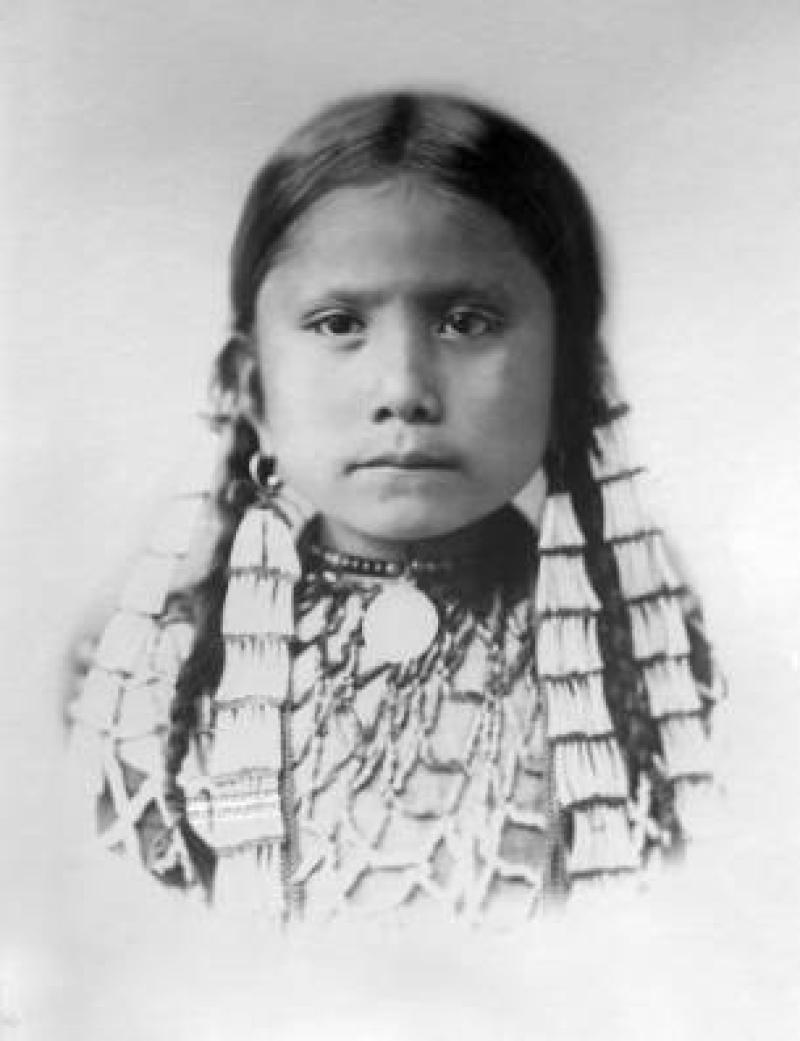Native American Cultures
Lesson Plan
Created by Joe Love

Core Theme to Which Lesson Relates:
Native Americans
Grade Level:
Eighth Grade Social Studies/Language Arts (special education classroom)
Estimated duration of lesson:
Four 45 minute periods
Content Standards:
The content standard or standards that the lesson fulfills and the relevant grade level indicators:
PreK-12 Social Studies:
People in Societies:
A. Compare cultural practices, products and perspectives of past civilizations in order to understand commonality and diversity of cultures.
Geography
C. Explain how the environment influences the way people live in different places and the consequences of modifying the environment.
02. Analyze how physical characteristics of the environment influenced population distribution, settlement patterns and economic activities in the United States during the 18th and 19th centuries.
Social Studies Skills and Methods
B. Organize historical information in text or graphic format and analyze the information in order to draw conclusions.
C. Present a position and support it with evidence and citation of sources.
02. Construct a historical narrative using primary and secondary sources.
Language Arts – Writing:
Communications: Oral and Visual
E. Give informational presentations that present ideas in a logical sequence, include relevant facts and details from multiple sources and use a consistent organizational structure.
08. demonstrate an understanding of the topic and present events or ideas in a logical sequence;
08. draw from multiple sources, including both primary and secondary sources, and identify sources used.
08. include an effective introduction and conclusion and use a consistent organizational structure (e.g., cause-effect, compare-contrast, problem-solution)
The Primary Source(s) used:
Various photographs of Native Americas and scenes depicting daily life as well as traditional ceremonies courtesy of the Monroe Fordham Regional History Center and other noted historical websites.
Related Resources:
Computer Lab, Internet, White Board/Markers, primary source photograph worksheets.
Activity Summary:
This lesson will serve as a bridge between the language arts and history classrooms. It will be used to help students gain a greater understanding of Native American culture and identify one of the groups opposing “American” settlers on their westward drive. In groups of 2 students will complete a photo analysis worksheet where they will be asked to identify and/or collect aspects of Native American culture using period photographs or artifacts. Students will then work to sequence a series of photographs and create a story that offers a possible explanation of the people and culture depicted in their photographs.
Student Learning Objectives:
a) The purpose of this lesson is to allow students to gain experience analyzing primary sources for clues to changes in
history,
b) the students will be able to research primary source photographs of Native Americans to discover how they lived,
c) The students will gain a better understanding of interactions between humans and their environment,
d) the students will gain a better understanding of interactions between humans and animals,
e) the students will gain a better understanding of the reaction of Native Americans to cultural change,
f) the students will understand the importance of sequencing when creating a story, and
g) the students understand why background information is important when summarizing an event or supporting a story.
Day 1--Activity #1: Photograph Analysis
The teacher will begin the lesson by having the students break into groups of two.
The students will review primary source photographs of Native Americans. The students will consider various aspects of Native American culture. The students will be using the Internet to view primary source photographs depicting Native Americans. They will analyze the photographs and answer questions on thephoto analysis worksheet based on their observations. Each group of students will view photographs from the following Web sites:
- Edward S. Curtis’s North American Indian.
- American Indians of the Pacific Northwest
- Omaha Indian Music
- History of the American West (browse under “Subject”, “Indians of North America” , then one of multiple subheadings)
National Museum of the American Indian: Collections search page.
Each group should choose two photographs and answer the questions on the using the attached photo analysis worksheet.
Day 2--Activity #1: Photograph Analysis and sequencing
Each group will receive and envelope containing artifacts from borrowed from the above websites (some groups will have the same photo artifacts). Each group will be asked to put their images into a particular order, so that they can create a story to go with them (the photos from each packet will serve as their storyboard). Once the images are in order, the students should make an outline of their story (using the
), to help plan their narrative before they begin to write their story. Each group will have the opportunity to share their analysis with the class. They will be expected to explain and support each of the details they chose.
Day 3--Activity #1: Story time!!
Groups will have time to write (or type) their stories. Grades will be based on interpretation and historical accuracy.
Day 4--Activity #1: Story time!!
Each group will share their stories with the entire class. While the students are reading their stories, their images should be taped to the white board (using the Mimio and projector) for the entire class to see. Tell the class to begin to look for common themes and elements in the stories and images. Have the students share out their stories with the class.
A post-assessment and its scoring guideline:
Collect student document analysis sheet and check answers to determine if students were able to identify main ideas. Use attached to evaluate written stories.
Materials needed by teachers:
PDF copies of primary documents and primary sources.
Materials needed by students:
art supplies, pencil, document analysis worksheet, and projector
Modifications:
Extended time if necessary.
Possible Lesson Extension:
If students fail to grasp the significance of sequencing and supporting details a group story may be created to demonstrate for students how to properly analyze then support a fictional story based on primary artifacts.
